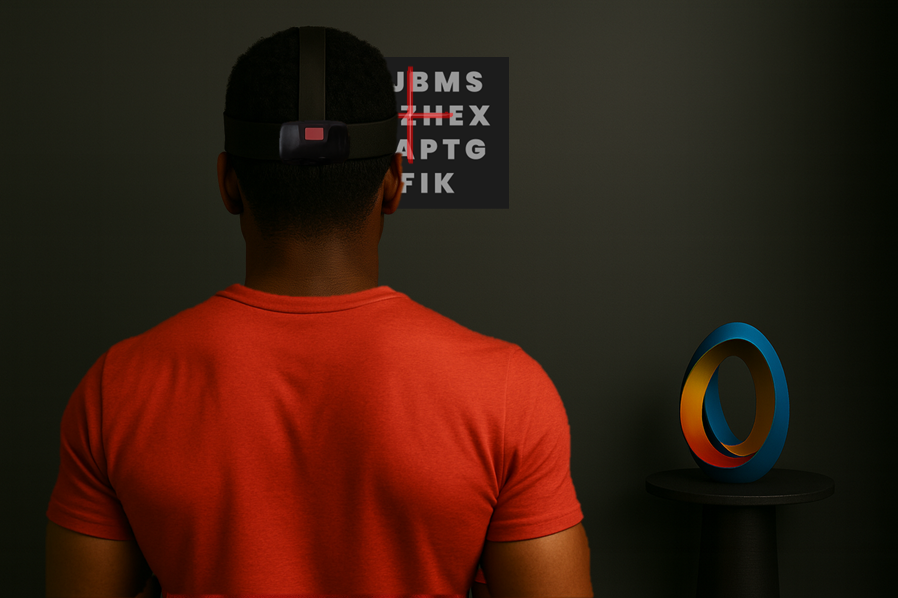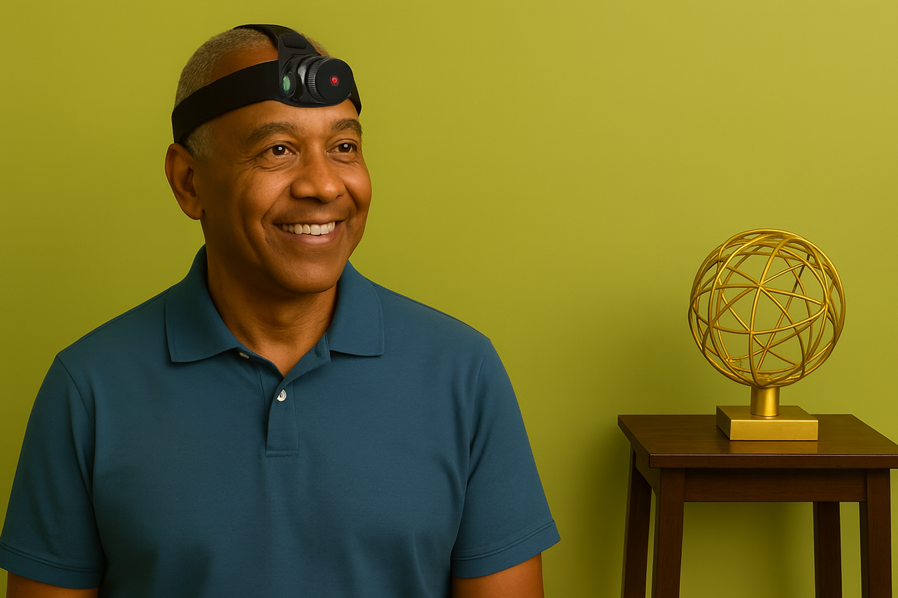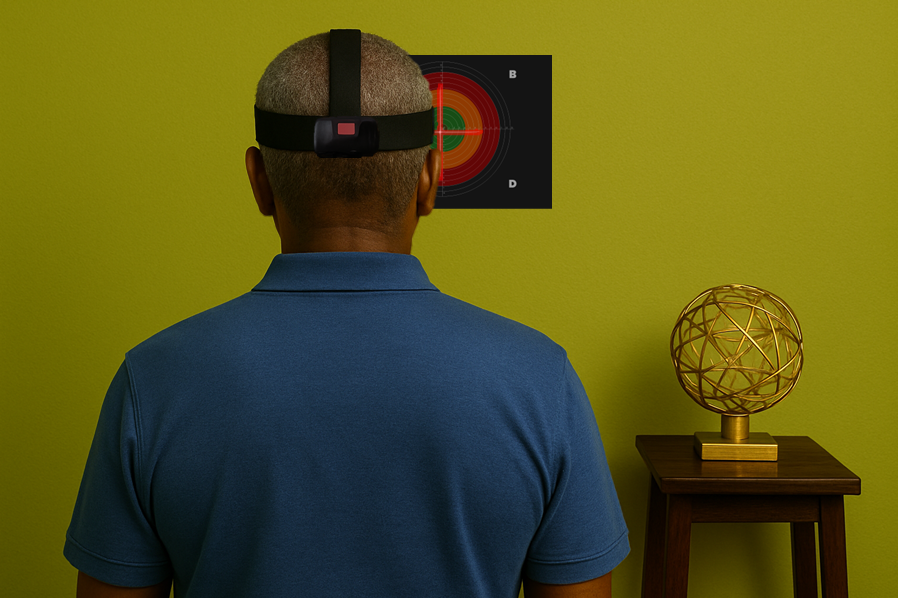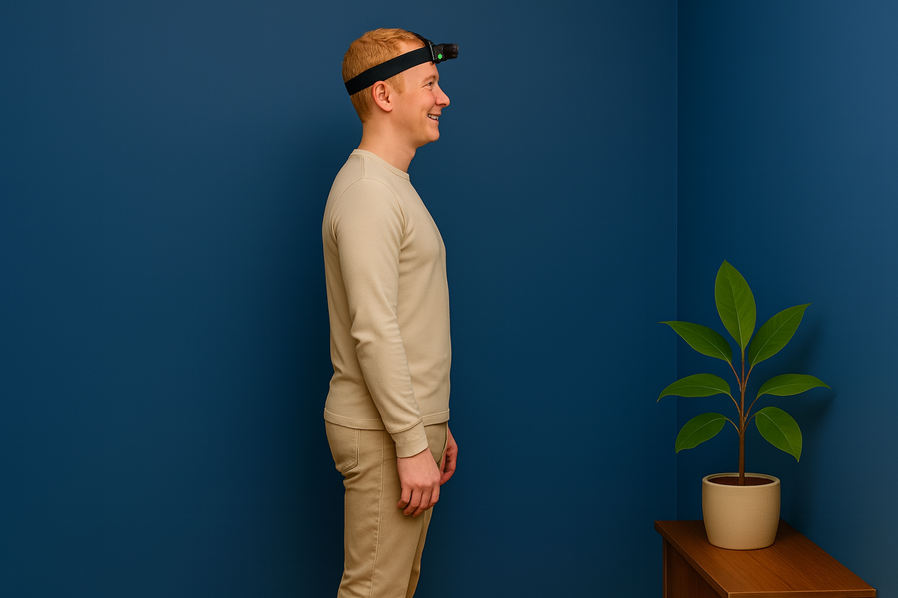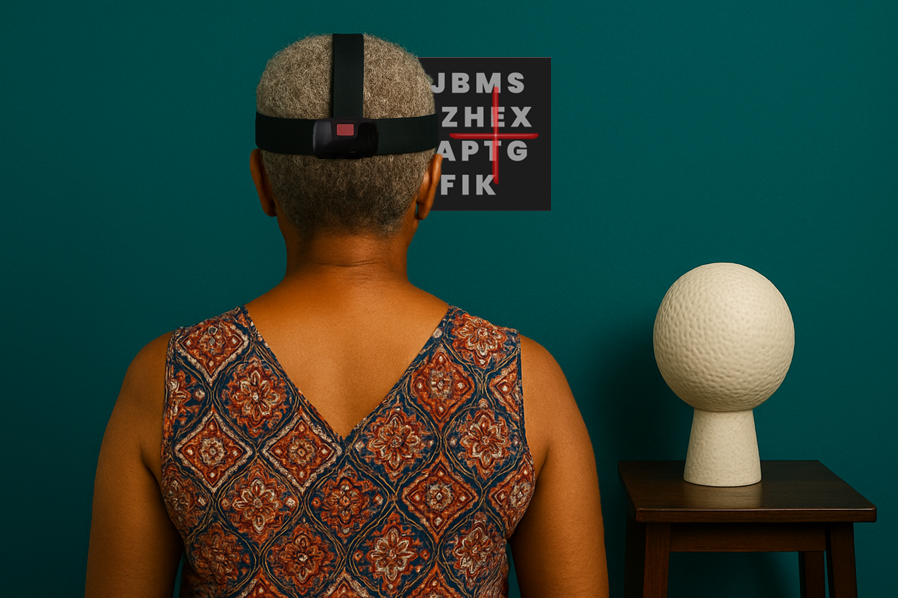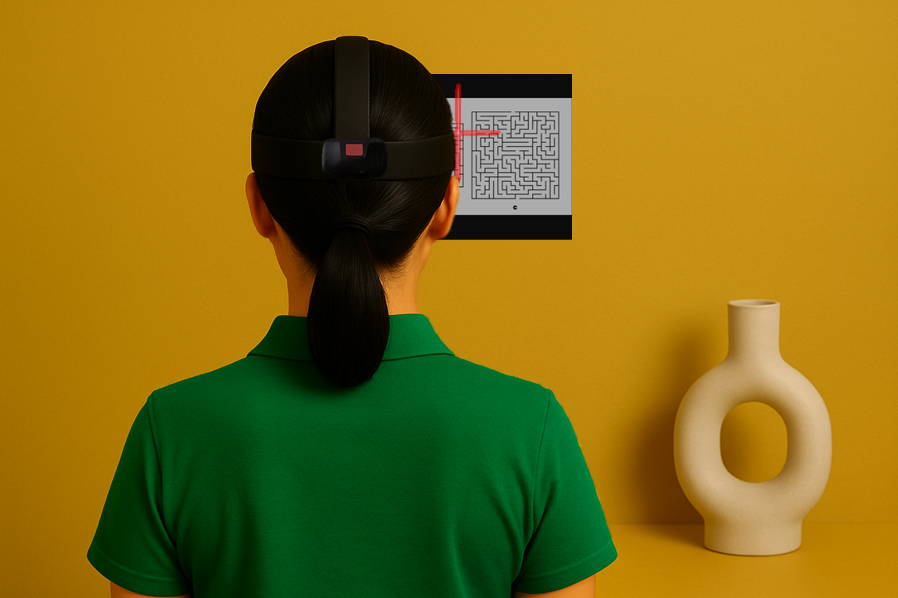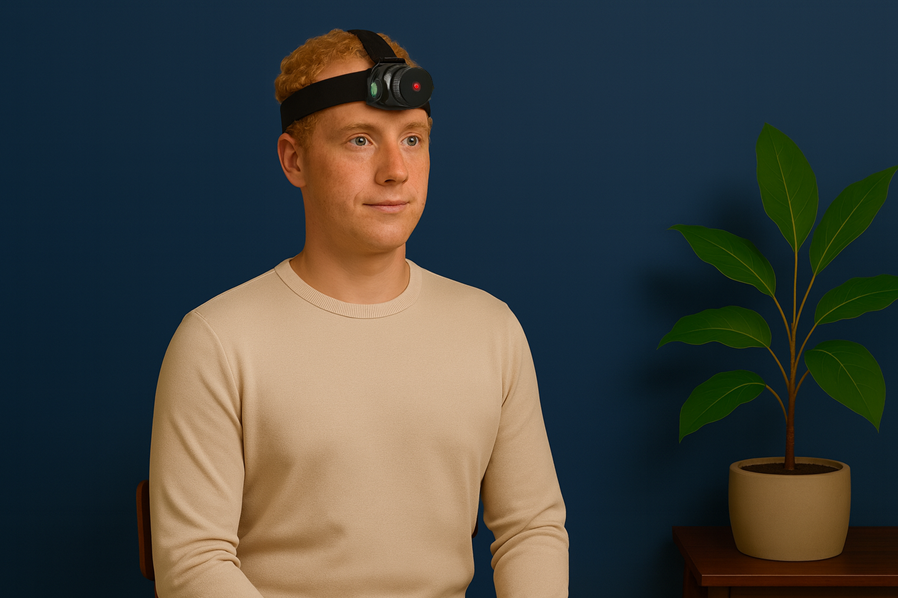Sport Conditioning & Neurocognitive Precision
This chapter focuses on integrating high-level physical outputs with precise neuromotor control. Each task challenges the athlete to maintain visual alignment, postural integrity and spatial awareness during dynamic or complex movements. By coupling strength, agility and balance with gaze control and proprioceptive recalibration, these drills sharpen cognitive–motor fluency under performance conditions.
-
G.1
-
G.2
-
G.3
-
G.4
-
G.5
-
G.6
-
G.7
-
G.8
-
G.9
-
G.10
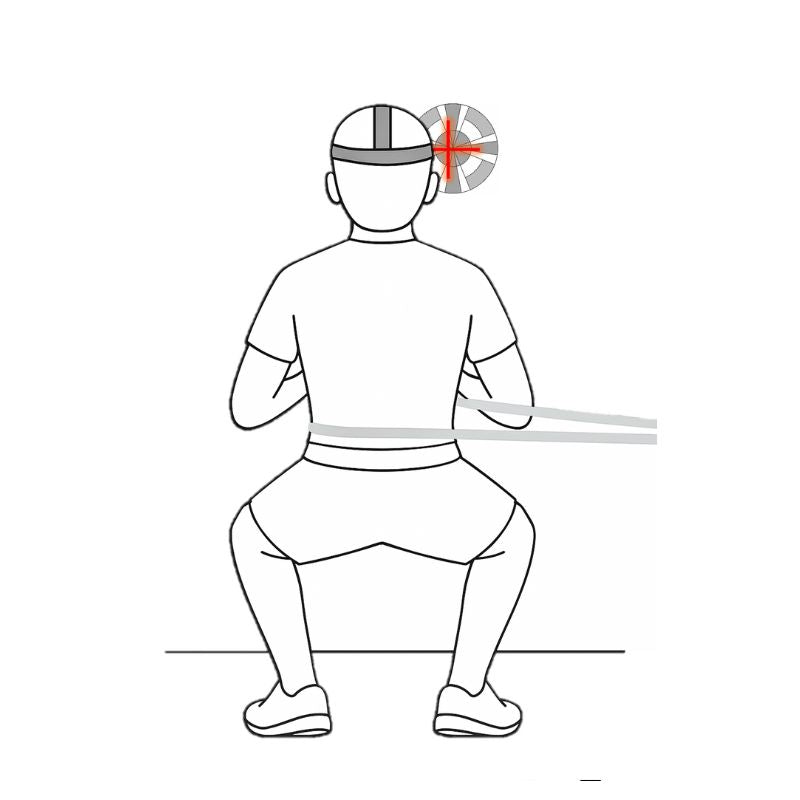
Hip Resistance Challenge
Loop a resistance band around your hips.
A partner holds the other end and applies unpredictable resistance while you trace a defined cross-hair pattern on the wall.
Maintain upright alignment and smooth head control throughout, resisting rotational pull without compromising tracing accuracy.
Why it matters?
This exercise develops reactive core control and hip stabilisation while training visual targeting under destabilising force.
It prepares athletes to maintain neuromuscular coordination and gaze stability when subjected to external contact, directional load or asymmetrical forces, common in sport-specific movement and high-impact collisions.
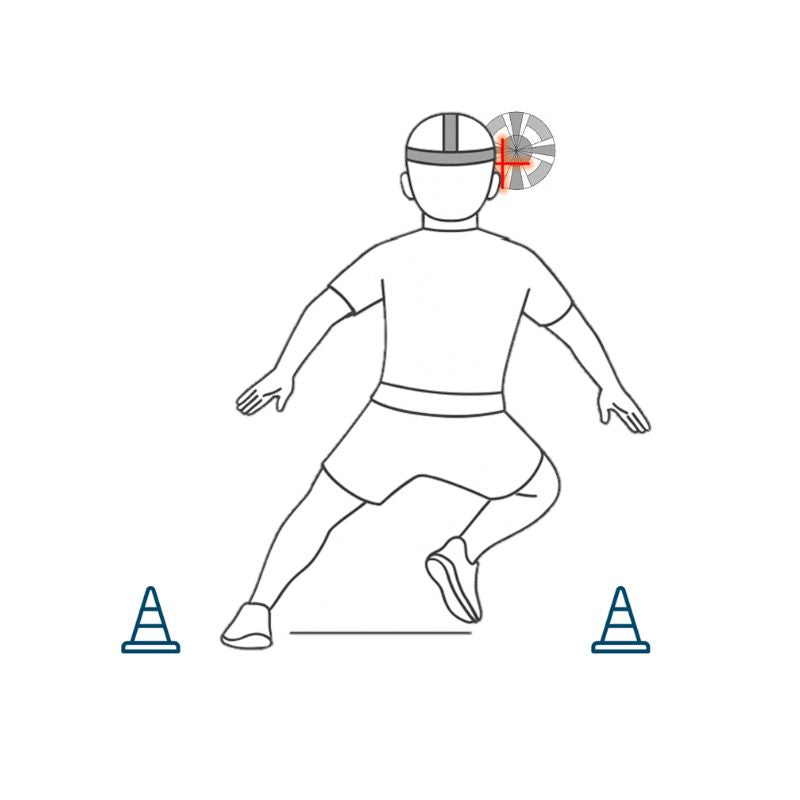
Reactive Bound and Fixate
Perform lateral bounds between spaced markers.
On each landing, visually fixate the called target with the laser as quickly and accurately as possible.
Focus on controlling posture and restoring cross-hair alignment immediately after landing.
Why it matters?
This drill links explosive lateral movement with visual redirection and balance recovery.
It strengthens the athlete’s ability to manage reactive changes in direction while maintaining orientation, critical in unpredictable play and transitional scenarios across field, court or combat sports.
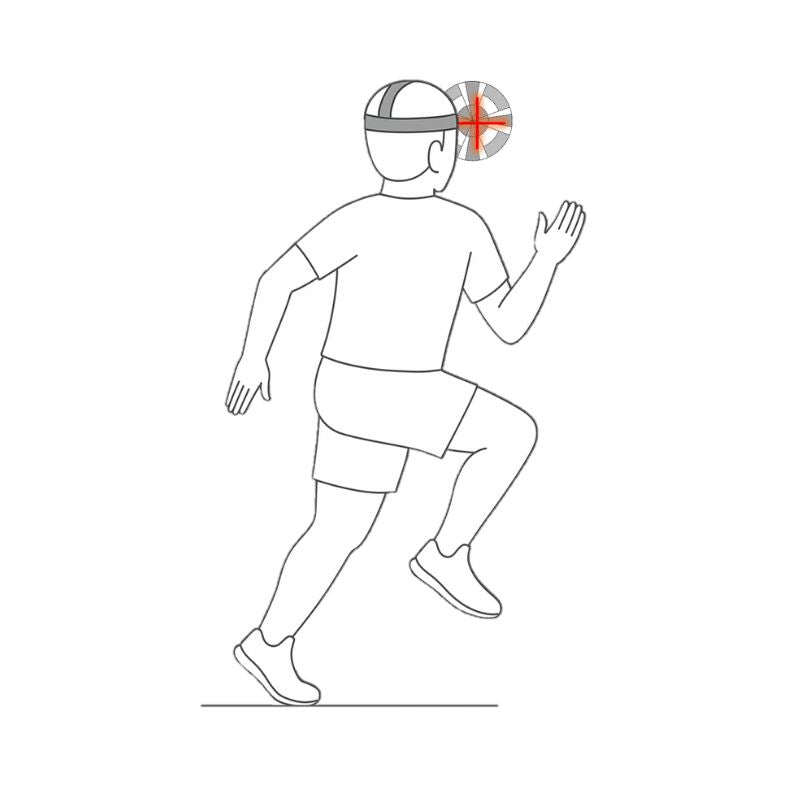
Saccadic Sprint Drill
Sprint on the spot with high knees and upright posture.
While maintaining a steady head position, alternate your gaze rapidly between two or more fixed peripheral targets placed at eye level.
Return gaze to centre between saccades. Continue scanning throughout the sprint without turning the head or lowering cadence.
Why it matters?
Trains dissociation between cervical posture and visual exploration under physical exertion.
Strengthens saccadic precision, visual tracking and postural endurance.
This mirrors real world demands where athletes must scan their environment under pressure while maintaining stability, balance and speed, without compromising visual control.
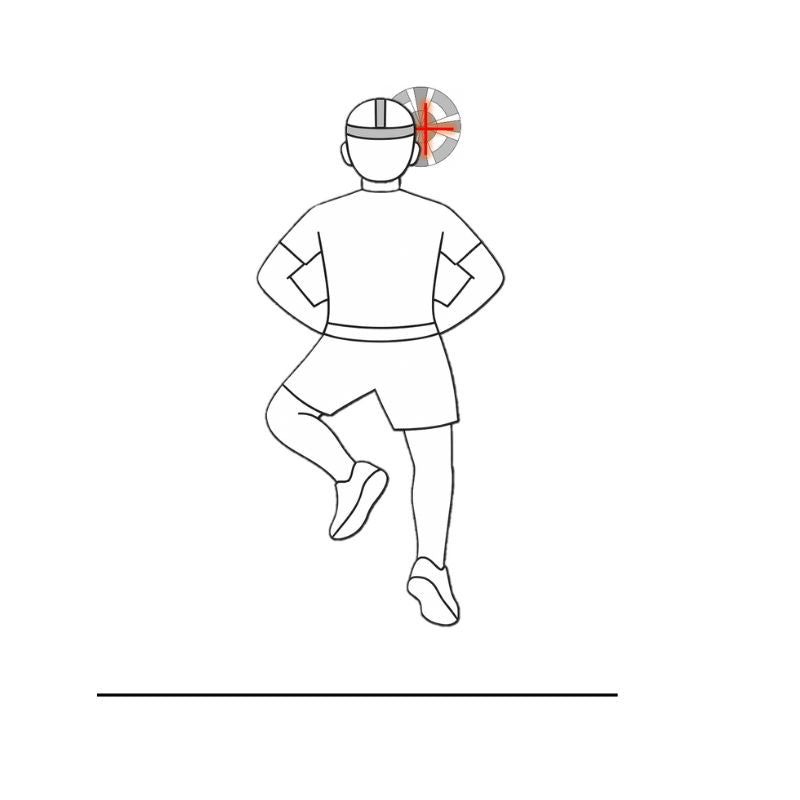
One-Foot Hop and Align
Hop forward on one leg and stabilise your landing
Immediately align the cross-hair to a central wall target, focusing on posture and minimal correction
Alternate landing legs to reinforce symmetrical control.
Why it matters?
Combines single-limb landing control with rapid cervical realignment.
It reinforces proprioceptive recalibration following dynamic movement, supporting athletic scenarios where rapid transitions and reactive positioning are required under uneven load or external perturbation.
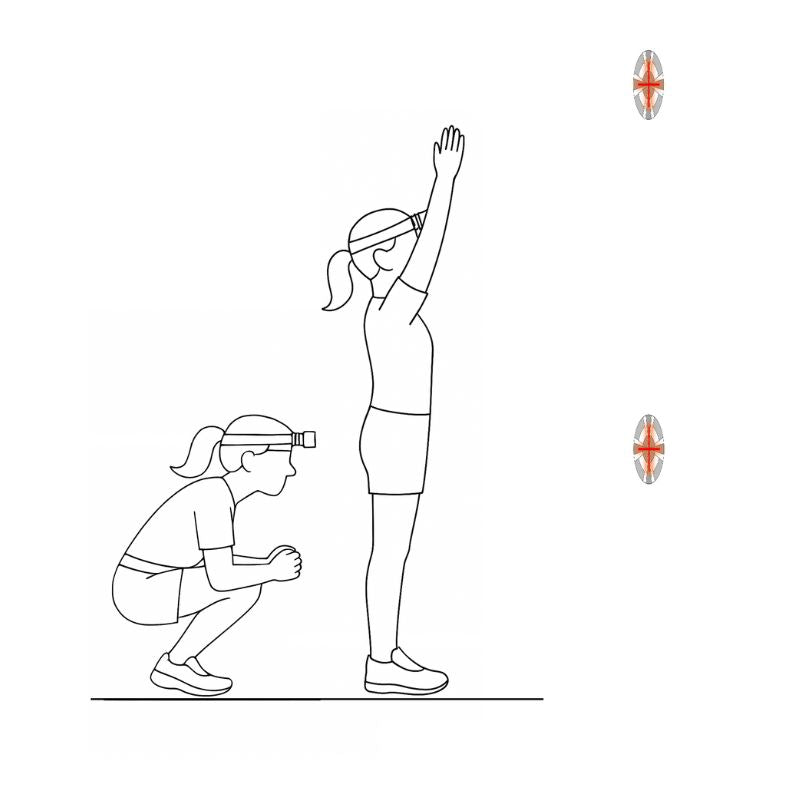
Low Duck High Reach
Duck under an imaginary horizontal barrier while keeping the laser fixed on a low target.
Rise into an overhead reach and maintain fixation on a higher target.
Move through both ranges with control and continuous head stability.
Why it matters?
Develops coordinated vertical dissociation of the head, trunk and limbs.
It trains gaze control across changing postural levels, useful in tasks that demand ducking, evasion or recovery into elevated tracking.
Also supports dynamic range control and injury prevention in sport-specific settings.
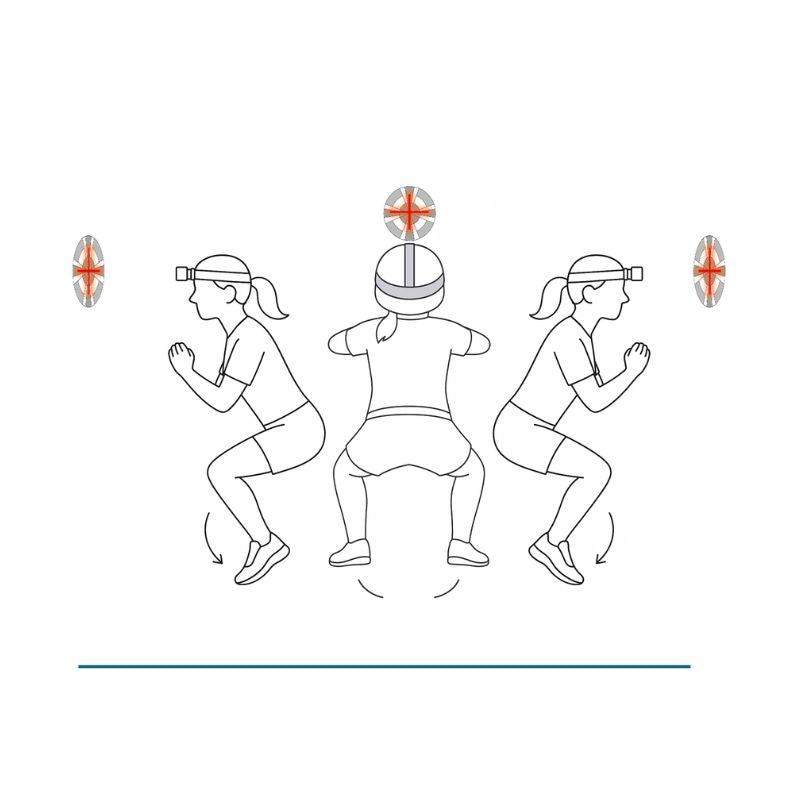
Jump Turn Lock
Start in a squat.
On cue, jump and rotate 90 degrees left or right, then land and fixate the cross-hair on a wall target.
Maintain alignment and visual control immediately upon landing.
Why it matters?
Trains rotational power and reorientation during ballistic tasks.
It supports spatial awareness and midline visual control under rapid movement, helping athletes refine jump–land sequences that require fast directional transitions without loss of tracking or postural form.
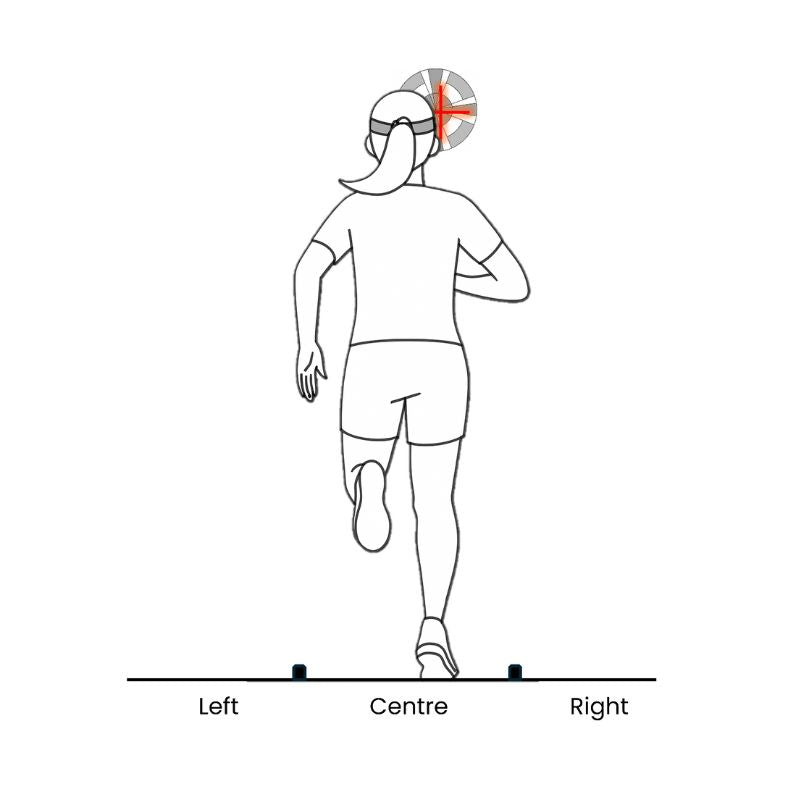
Reactive Sprint and Shift with Fixation
Sprint on the spot at high cadence, maintaining an upright trunk and steady gaze fixed on a centre cross-hair.
A partner calls “left”, “right” or “centre” at random intervals.
Immediately shift laterally to straddle that position relative to an imaginary centre on the floor—without breaking visual fixation or reducing tempo.
Return to sprinting until the next command.
Why it matters?
This exercise builds reactive agility and dynamic postural control under continuous physical load.
The enforced gaze fixation trains cervical stability while the partner cues simulate unpredictable match conditions.
This drill enhances lower-body responsiveness, upper-body stillness and attentional switching—all essential for movement discipline in high-tempo sports.
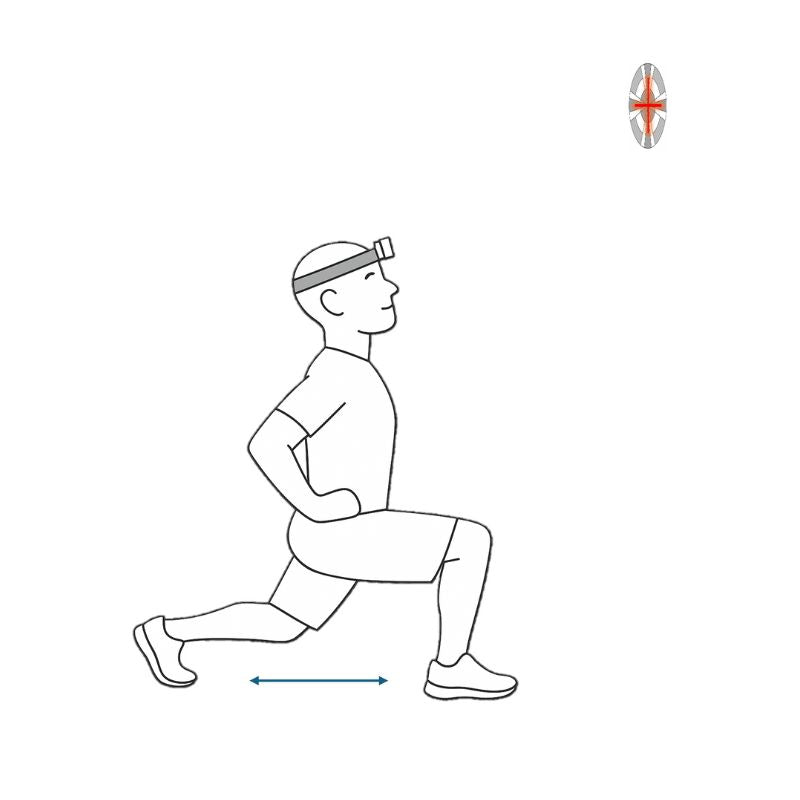
Lunge and Lock
Perform a forward lunge and lock the laser on a high target at the point of maximal extension.
Reset to standing before alternating sides.
Maintain trunk stability and smooth cross-hair control throughout.
Why it matters?
Strengthens integrated control of trunk, hips and cervical alignment during unilateral lower-limb extension.
This builds movement efficiency and head–eye targeting capacity during offensive lunges, interceptions or when transitioning from split-stance positions in high-speed play.
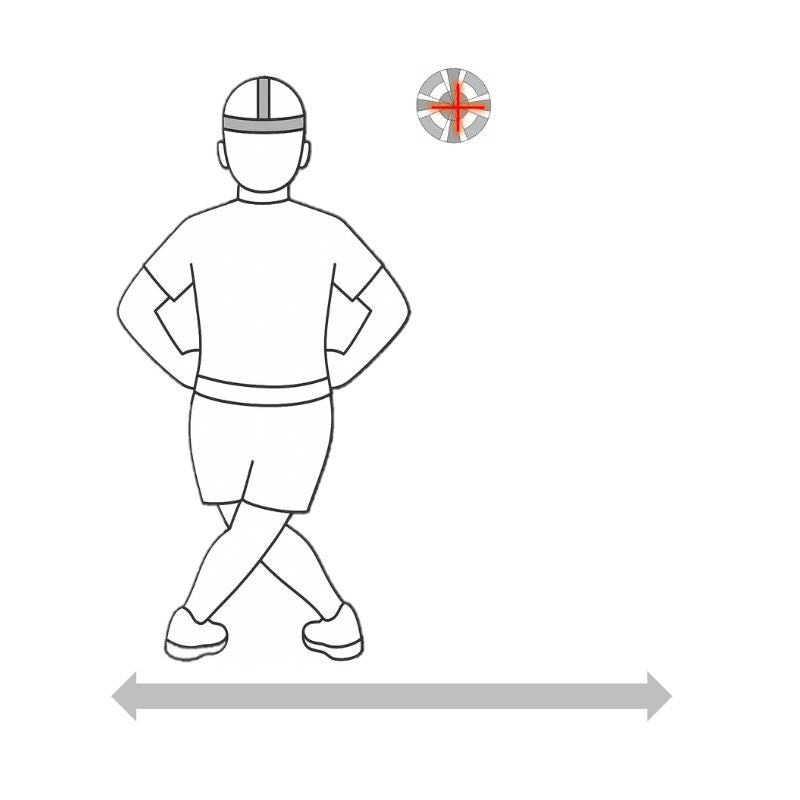
Cross-Step with Visual Lock
Perform lateral cross-steps along a marked path while maintaining steady laser alignment on a frontal target.
Keep the torso and feet mobile but stabilise the head throughout. Focus on smooth transitions and steady visual tracking.
Why it matters?
Reinforces trunk–head separation and visual fixation during lateral movement.
Mirrors real-world conditions where the feet reposition rapidly but the gaze remains fixed on ball trajectory.
Builds postural integrity and control during directional adjustment under fatigue.
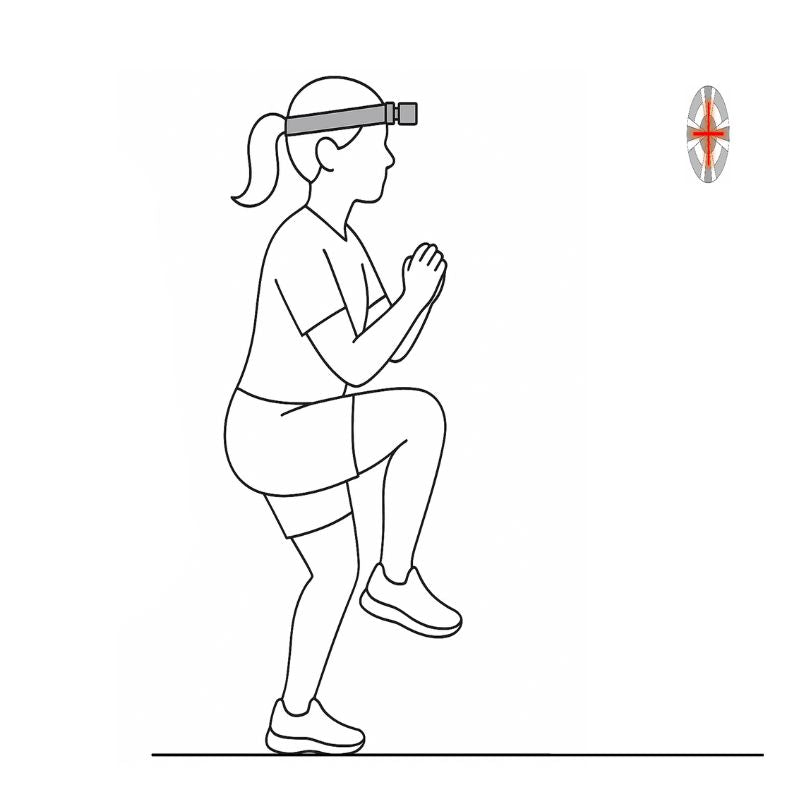
Eyes–Shut March
Align the laser to a central wall target, then close your eyes and march slowly in place, lifting knees to hip height.
After marching, open your eyes and re-align the cross-hair to the original position.
Why it matters?
Trains proprioceptive and vestibular systems by removing visual input during motion.
It supports internal recalibration of head position, improving spatial consistency and movement reliability.
Particularly useful for sports requiring stability in visually unpredictable or cognitively demanding environments.

